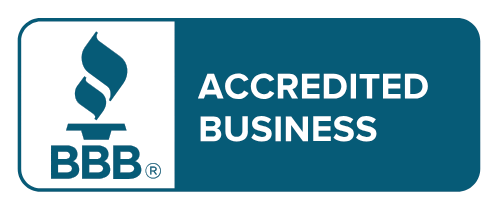Transforming Spaces: 5 Sustainable Practices for Future Renovations That Inspire Change
This is a subtitle for your new post

Transforming Spaces: 5 Sustainable Practices for Future Renovations That Inspire Change
Building a new home is exciting, but it also comes with responsibilities. You want your new custom home to be beautiful, functional, and good for the planet. Embracing sustainable practices is a smart way to make this happen. Sustainable home building focuses on using materials and methods that are eco-friendly and efficient. This is key to creating a home that benefits you and the environment.
Key Takeaways
- Sustainable building uses materials that are good for the Earth.
- Smart design choices save energy and water.
- Using local resources helps the Charleston economy and cuts down on transportation.
- Eco-friendly homes can save you money in the long run.
- Explore energy-efficient home options that complement sustainable practices.
Understanding Sustainable Home Building
When you think about a sustainable home, think about more than just the materials. It includes how you design and build your home. A sustainable home is not just energy-efficient; it also supports local ecosystems and communities.
Why Choose Sustainable Building Practices?
Choosing sustainable practices can help you in several ways. First, they can lower your utility bills. For example, using energy-efficient appliances means you use less electricity. Second, these practices help protect the beautiful environment of Charleston. You can build a home that fits well in its surroundings.
Benefits of Sustainable Custom Homes
- Energy Efficiency: Energy-efficient homes use less power. This keeps your bills lower.
- Water Conservation: Using water-saving fixtures helps reduce waste.
- Healthier Living: Sustainable materials are often better for your health. They can improve air quality in your home.
- Long-Term Savings: Although some sustainable features might cost more upfront, they often save money over time.
Sustainable Practices Overview
Aspect Description Benefits Energy Efficiency Using appliances and systems that consume less power Lowers utility bills Water Conservation Installing fixtures that reduce water usage Saves water and money Sustainable Materials Choosing eco-friendly materials for building Reduces environmental impact Local Sourcing Utilizing resources from the Charleston area Supports local economy and reduces transport Sustainable Materials for Home Building
One key part of building a sustainable home is choosing materials wisely. Here are some options to consider:
Bamboo Flooring
Bamboo is a fast-growing plant. It is sturdy and looks great. Using bamboo for flooring is a smart choice. It can handle wear and tear while being kind to the Earth.
Recycled Materials
Using recycled materials can be a great way to save resources. For example, you can find bricks and tiles made from recycled products. This helps reduce waste in landfills.
Low-VOC Paints
Volatile organic compounds (VOCs) are found in many paints. They can be harmful to your health. Choosing low-VOC paints means you get beautiful walls without the harmful effects.
Insulated Concrete Forms (ICFs)
ICFs are great for building energy-efficient homes. They help keep your home warm in the winter and cool in the summer. This means using less energy for heating and cooling.
Smart Home Technologies
Adding smart technology can make your home more efficient and convenient. Here are some ideas:
Smart Thermostats
Smart thermostats learn your schedule. They adjust the temperature based on when you are home or away. This helps save energy and keeps your home comfortable.
Energy Monitoring Systems
These systems help you track your energy use. You can see which appliances use the most power. This can help you make smarter choices.
Smart Lighting
Install smart lighting that can dim or turn off when not needed. This reduces electricity use and extends the life of your bulbs.
Additional Smart Home Features
- Automated HVAC Control: Keeps climate consistent for comfort and efficiency.
- Smart Security Systems: Enhances safety while optimizing energy use.
- Voice-Activated Assistants: Manage home functions easily and efficiently.
Designing for Sustainability
The design of your home plays a big role in its sustainability. Here are some tips to keep in mind:
Orientation and Natural Light
Positioning your home to take advantage of natural light can reduce the need for electricity. Large windows on the south side of the house can bring in warmth and light.
Passive Solar Design
This design uses the sun’s energy to heat your home naturally. With the right materials and orientation, your home can stay warm in winter without extra heating.
Landscaping for Efficiency
Choose plants that are native to Charleston. These plants need less water and care. A well-planned landscape can also provide shade, helping to keep your home cooler.
Choosing Local Resources
Using local resources is another important part of sustainable building. Here’s why it matters:
Support Local Economy
When you buy materials and hire contractors in Charleston, you support local businesses. This keeps money in the community.
Reduce Transportation Costs
Using local resources means less transportation. This helps reduce carbon emissions since less fuel is needed to deliver materials.
Better Quality Control
Local builders know the area and its challenges. They can provide valuable insights into what works best for homes in Charleston.
Educating Yourself and Your Builder
Before starting your custom home, educate yourself and your builder about sustainable practices. Ask questions and discuss your goals. A good builder will work with you to include eco-friendly options in your design.
Finding the Right Builder
When looking for a builder in Charleston, find one who understands sustainable practices. Look for:
- Experience with Eco-Friendly Homes: Check their past projects.
- Knowledge of Local Regulations: Your builder should know the rules for building in Charleston.
- Strong Communication: Good communication is key to a successful project.
Real-Life Examples of Sustainable Homes in Charleston
Charleston has many examples of homes built with sustainable practices. Here are some features you might see:
- Roofs made of recycled materials.
- Rainwater harvesting systems for irrigation.
- Energy-efficient windows that keep homes cool.
Sustainable Home Features Overview
Feature Description Benefits Recycled Roofs Roofs made from repurposed materials Reduces landfill waste, eco-friendly Rainwater Harvesting Systems Systems to collect and use rainwater Saves potable water, reduces utility costs Energy-Efficient Windows Windows designed to minimize heat loss or gain Improves comfort, lowers energy bills These examples show how beautiful and functional sustainable homes can be.
Conclusion
Building a custom home in Charleston is an exciting adventure. By choosing sustainable practices, you are making a choice that benefits you and the environment. You can create a home that is beautiful, efficient, and kind to the Earth. Sustainable building is not just a trend—it is a smart way to build for the future.
Embrace these practices and work with a builder who shares your vision. Together, you can create a home that you will love for years to come. Building sustainably is not just about what you put in your home; it’s about building a better future for us all. Discover eco-friendly building guidelines for a sustainable approach to home construction.






